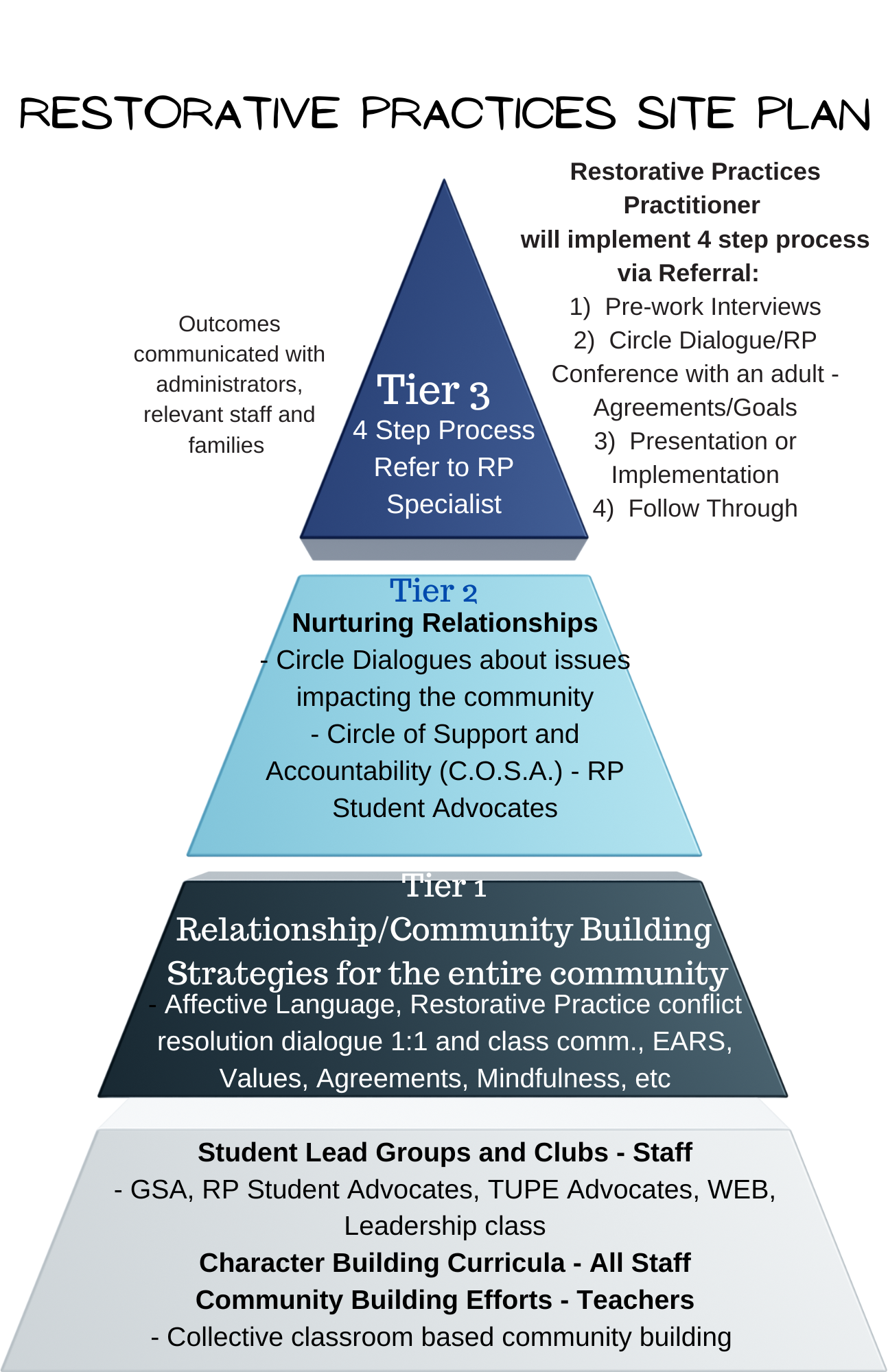What is Restorative Practices in Academic Communities?
Restorative Practices Overview
Restorative Practice in academic settings is a shift in culture that involves all community members from district office personnel to school site administration to all staff.
The adults in academic communities are responsible for creating the container (setting the tone of a culture) in which our students will engage with adults and one another.
Restorative Practices “calls in” all community members including family and creates spaces that leads with inclusion, community building and addressing individual needs.
Restorative Practices is a paradigm shift from punitive actions and policies that discard community members to valuing relationship and inclusion.
Effects on Students
Strengthen members' sense of connection with each other, creating a more kind and productive school-wide and classroom communities.
RP bolster member’s social and emotional skills and their cultural and racial awareness
RP builds and strengthens relationships and communication among students and staff.
develop skills to resolve conflicts and problem-solve, and repair harm in restorative ways rather than impose punishment (through restorative discipline)
RP - Critical Implementation Steps
Cherry Picking aspects of the Restorative Practices model can cause harm and reduces effectiveness.
Educate the community on systems of inequity to better understand the need for RP.
Decisions need to be made about one’s desire to dismantle systems of inequity because these systems benefit those with privilege.
Dismantling punitive and carceral systems for those community members we discard creates fear based decision making.
Invest time and energy in Tier 1 strategies and community building.
RP implementation efforts are led by the decision makers/administrators for the school site and teachers per classroom community.
Administrators need to model their leadership and engagement through RP
Administrators give time and space for RP engagement when adults gather
Administrators give staff permission to invest the time for community building
Invest in training, coaching and support for all members and work toward community agreements regarding implementation.
RP - Myths and Mistakes
RP doesn’t work.
RP does not work when it’s not implemented with fidelity and by-in from community members.
RP does not work when it is used as an alternative disciplinary action (like suspension or expulsion).
Punitive Discipline is not working. (ie spanking)
RP doesn’t do anything to an offender.
We have to determine if we want to do things TO people or WITH people.
When we create spaces that all community members values their sense of belonging, if they offend someone they want to take responsibility and make it right.
Being held accountable addresses the needs of the person who was harmed, the person who did the harming and the community members who may have been impacted.

